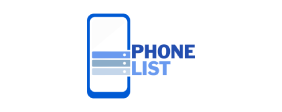Most of us have jobs that involve interacting with people in one way or another. So at work, we are focused on collaboration. We easily communicate in work chats, speak at meetings with varying degrees of enthusiasm… But when it comes to a business letter, our communication settings break down, and we start producing some complex verbal constructions from which it is unclear what the author wanted to say. Sound familiar? With the help of our tips, you will learn how to write letters to clients so that they become a tool and so that they are read to the end, and not sent to the trash.
Start with the question Why
Many people wonder how to start a letter to a client. It is best to start by highlighting the main idea. You decided to write to the client for some reason, right? – Why? Formulate this goal for yourself in one sentence and start from it when writing. In particular, this technique will help formulate the subject of the letter. Remember that the subject of the letter is what primarily determines whether your client will read it. More than half of the letters are never opened simply because the subject is stuffy, uninteresting or poorly developed. And one more thing: NEVER WRITE THE SUBJECT IN CAPS. This is a very bad technique, which many of us read as aggression.
A Telegram database usually contains information about telegram database Telegram users, such as their phone numbers, usernames, or group memberships. This data is sometimes used for marketing, contacting people, or analyzing trends. But, gathering and using this data without clear permission can break privacy rules like GDPR and Telegram’s own rules, which don’t allow sending unwanted messages or collecting data without consent.
Don’t Forget the Preheader
If you “won” the subject of the letter, it does not mean that it will be opened and read. By default, mail services form a preheader, or pre-header of the letter, automatically. Make sure that this fragment of the first phrase of the message does not spoil the whole raspberry for you. For example, like here. Given the wide range of products we offer and our commitment to customer satisfaction, we ask that you take a few minutes to complete this survey to help us improve our services and enhance our overall customer experience. Empty phrases that do not carry any semantic load. Don’t do this. It’s better to just use a button (as in the example above).
Don’t use the client’s name in vain
Most often, we address the recipient of the letter directly to emphasize that we have written this text especially for him. However, modern clients are well aware of what mass mailing is and on what scale it is produced, so they do not identify such letters as some kind of unique offer. On the contrary, research by the has shown that users treat such emails with distrust. Only use the customer’s name in the subject line if you have a truly personalized offer for them.
Introduce yourself correctly
How to introduce yourself in a letter to a client? The simpler and clearer, the better. Write who you are and where you are from. And again , the simpler, the better. You don’t need strategic web marketing guide for a b2b company to talk about your company in the greeting and introduction. Just introduce yourself. And then write some interesting detail that could build a bridge between you and the client. By the way, this works much more effectively than addressing by name in the subject line from the previous point.
Save time – yours and others’
Don’t make the client read the body of the letter to understand what you are trying to convey to him. Believe me, he won’t do this and will simply throw your opus in the trash. And afb directory you are clearly counting on a different effect. To make it easier for the client to understand what the text is about, make this text as readable as possible. To help you.
When composing a letter to a client, it is important to adhere to the rule: one letter – one subject. Otherwise, you may end up with a “rag” of text, which the client will skim diagonally and think: “Hmm… there are too many letters here. Welcome to the trash bin.” Brevity always wins in the competitive struggle even with the most interesting, but long text. We live in an era when we constantly have no time for anything – especially for longreads by e-mail. Therefore, the optimal volume of characters in a letter to a client is approximately as follows.
“We intuitively want to convey to the reader what we ourselves consider important. But we need to convey what the reader sees himself and his problems in ,” notes Maxim Ilyakhov in his book “Clear, Understandable. How to Convey Thoughts and Convince People with Words.”
Reread your message before sending: is it really useful for your client? This is extremely important. A letter to a client that does not solve his problem is a letter written in vain. So a competent advertiser must also be a psychologist, manager, salesperson and…. suffer from a split personality. In the good sense of the word. After all, as we know, in order to “catch” a client, you need to think like a client.


